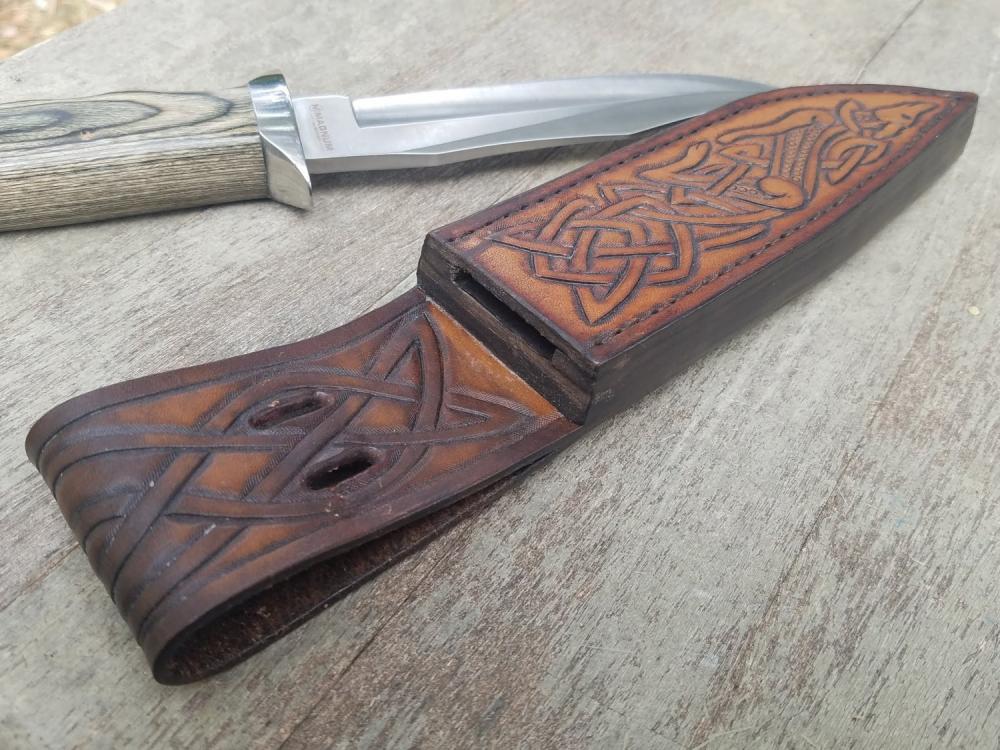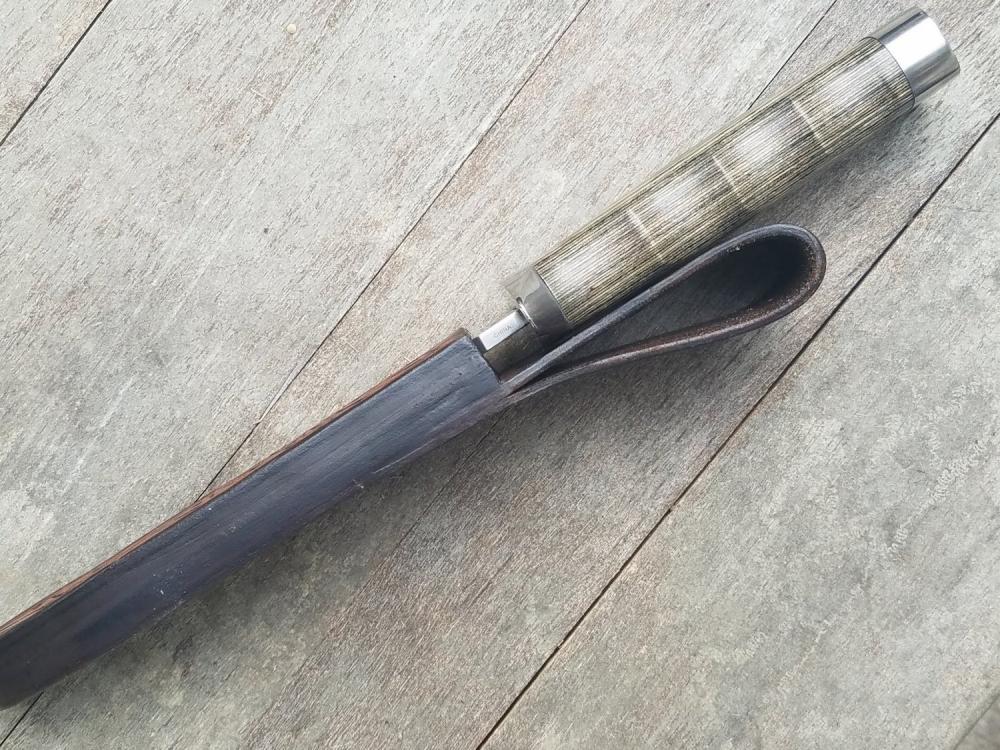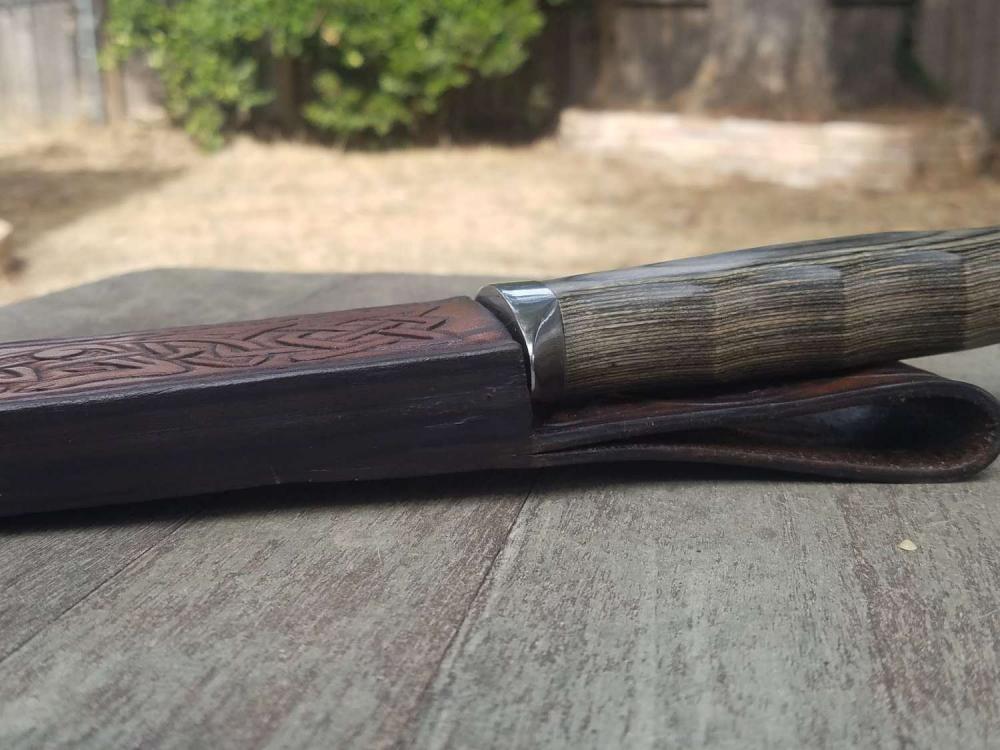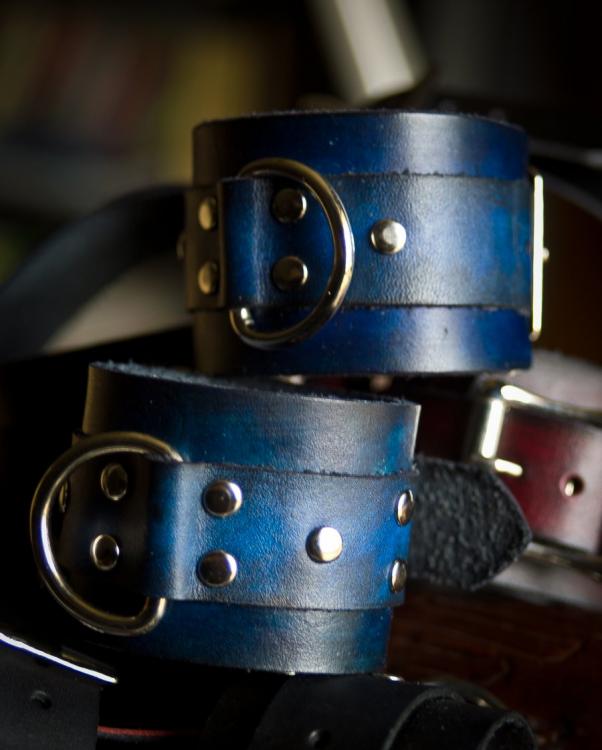-
Posts
67 -
Joined
-
Last visited
Content Type
Profiles
Forums
Events
Blogs
Gallery
Everything posted by Gabriel Rasa
-

What is Mycelium Leather? Does it exist?
Gabriel Rasa replied to RobertoDR69's topic in Leatherwork Conversation
It's likely a high percentage of plastic; most of these "vegan leathers" are, even the ones advertising themselves as made of cactus, or seaweed, or in this case mushrooms. Read the fine print, it's usually still like 40% plastic, and will behave as such. You might as well just work with vinyl. =/ Drives me crazy, because they're selling people on the idea that it's better for the earth than real leather, but it's not, it's just harder to quantify the environmental damage of plastic than "1 leather item = at least 1 dead cow." But there's no such thing as vegan leather, it's plastic, it sheds microplastic particles, it has a fraction of the lifespan of leather, and it does not return to the earth as gracefully, just clogs up the landfills. Responsible environmental stewardship is important to me too, but a blanket ban on all animal products is not the answer. /end rant -
50/50 resolene/water is my go-to sealant as well. I usually only use the wax spray when I'm in a hurry, because it's more expensive, but it goes on fast and dries fast. That might explain it though, if I'd used the wax under the antiqueing paste instead of resolene, and the paste didn't adhere to it. ...Yeah, that's probably it; I've also found that acrylic paint doesn't stick to wax-hardened veg-tan well. Good thing this piece was for me, not for a customer, so I'll just keep touching it up periodically. Thanks!
-
This isn't a problem I've had before, but on one particular belt I keep having issues with the antique flaking off. I used alcohol based dye and Fiebings dark brown antiqueing paste (though I don't remember if I sealed it before antiqueing), with a finishing coat of Fiebings spray wax Leather Sheen. I've touched it up once before, but now it's happening again. Any suggestions for how to avoid this problem in the future?
-
Aha, this is what I was after! What did you use to remove the grind marks? Was that the sandpaper? I'm assuming you used a super fine grain?
-
I was never great at stropping even when I did use a metal swivel knife -- I was never sure which jeweler's rouge/compound I was supposed to be using, and couldn't actually tell whether it was making a difference. (Though if anybody can weigh in on that, I'm sure I've still got all the stuff kicking around somewhere.) When I'm sharpening razor blades I use a regular whetstone, and I've found that finishing it off with a ceramic whetstone makes a world of difference in how smoothly it cuts, but I'm guessing you can't sharpen a ceramic blade with a ceramic whetstone. =/
-
I've had some bad, bad experiences with water-based dyes -- if your project gets wet, the dye will run immediately, and I wouldn't trust any sealant to 100% keep water out. Especially if you're going for a more natural look with oils and balms instead of a synthetic topcoat -- there's absolutely nothing keeping the water out, and your water-based dye is going to bleed like crazy if it ever gets wet. That said, I completely agree with your dislike of oil dyes, but instead of going to water-based dyes, might I recommend a straight alcohol dye? I'm given to understand that the Fiebings (not pro) dye is alcohol-no-oil, or if you've lost faith with Fiebings, you could use what I use, which is Angelus dyes. They give you vivid, waterproof color, so even if moisture manages to penetrate your sealant layer (or if you're conditioning the leather rather than sealing it) the dye is guaranteed not to run. As for the clear topcoat, I do use resolene, but only ever mixed 50/50 with water -- you have to apply multiple coats to get it water-resistant (until the leather stops darkening with subsequent applications), but it goes on thinner and more flexible, and is less plasticky when it dries. If you've got any resolene still kicking around, you might try that and see what you think of it.
-
Basically: is it necessary? I keep seeing people on youtube and whatnot stropping their ceramic blades before use, but I've been using the same ceramic filigree blade for all the work I do for... eight years now? Haven't stropped or sharpened it once, and the only time I notice it dragging is when the leather is cheap and spongy and/or badly cased. Would I be getting better results if I did? Or are the youtubers stropping unnecessarily?
-

Thick welted sheath
Gabriel Rasa replied to Bawarrior's topic in Gun Holsters, Rifle Slings and Knife Sheathes
What kind of bit did you use in the drill? I've detached the point from a scratch awl and used that before (with a dremel press), but the last time I tried, I wasn't happy with how big it made the holes. I like how compact and tidy yours are. -

Re-dying finished and tooled leather products
Gabriel Rasa replied to Bobadouba's topic in How Do I Do That?
Wild. O_o The stuff I have causes an endothermic reaction with gloves, goes cold and shreds nitrile in under a minute. (I was using it to dilute alcohol-based dyes for dip-dyeing for a while, hence the gloves, cuz I didn't want to walk around with pitch-black hands afterward. XD) When I was using it to strip the sealant off the aforementioned project, I wasn't wearing gloves, just applying it with a rag and doing my best to keep it off my hands, but where it did get on me, it left a super-thin layer of dry, whitish skin. Not a big deal for the user, since skin cells replenish themselves so quickly, but leather can't exactly do that, so it's not something I'm keen to use anymore. -
I've done many welted sheaths that address the exact problem you're talking about -- if you want the handle to lay flat against the backing, you need a layer of leather the depth of the handle, that goes between the blade and the base to act as a riser. You do wind up with a lot of layers, but it fits the knife like a glove, and if you want it to taper, you can always skive the layers down as you go toward the tip (a belt sander is very helpful for getting a smooth gradient on this) -- or just be lazy and let it stay massive all the way down. Looking a bit worse for the wear after a few years, but here's one the first ones I did:
-
It looks like you may be using the wrong kind of leather -- the texturing on it suggests that it's been milled, and you need something stiff for doing tooling. It also looks like the leather was too dry when you did your carving, which is why the knife didn't want to cut in very deep. Make sure your leather has been properly wetted, enough to saturate to the core, and then allowed some time to let the surface slightly dry again, so that it isn't soggy and clinging to your knife.
-

Re-dying finished and tooled leather products
Gabriel Rasa replied to Bobadouba's topic in How Do I Do That?
I wouldn't recommend acetone -- yes, it'll take off the finish, but it's extremely caustic and it'll take off the top layer of your leather too. (I mean -- just think about the fact that there are literally no gloves that acetone won't eat through (butyl rubber will buy you the most time, but even that will lose in the end), and then think about what it's doing to the leather.) I used it on a project I wanted to re-dye, and I wish I hadn't, because it visibly, permanently dulled the surface. Even resolene couldn't bring back the shine afterward. I haven't tried Fiebings deglazer (it's not legal where I live), but from what I've heard, it seems to be the tool for the job. (And everything else Fiebings makes is on point, so I believe it.) -
In addition to using quality leather, it's also very important to make sure your leather is properly cased before you tool -- it will come out much, MUCH better. Trying to carve & tool on leather that is too dry or too wet will give you shoddy results, regardless of your skill level. Another secret I've found is to rub it down with a leather conditioner (I use Lexol, you can find it in the automotive department of Walmart, etc) right before you carve -- it makes the swivel knife just glide through the leather beautifully.
-
Seconding the sheepskin idea, because I bet the lanolin in it would be quite good for sensitive skin. But if you're not looking to put a lining on the collar, then I would DEFINITELY skip the wax, that's just going to harden it. (Although you could mix it 50/50 with neatsfoot oil before you apply it, and that might work.) When I made collars (meant for people), my go-to was simply gum trag, though I've since switched to saddle soap because it slicks up nicer. I don't know if there's anything in saddle soap that might irritate sensitive skin, but gum trag is almost guaranteed to be non-reactive. (And according to wikipedia, was used in the past as a topical treatment for burns -- the more you know!)
-

another belt measuring question
Gabriel Rasa replied to Dave Richardson's topic in How Do I Do That?
Oh man, THIS. I'm like, I'll need your husband's waist size for this. "He wears 34-inch jeans." Yeah, just humor me, measure it anyway. "His waist is 36-38 inches." Uh-huh, that's what I thought. I used to sell harnesses to the fetish crowd, and you would not believe how many people gave me aspirational rather than actual measurements, and then were dismayed when their stuff didn't fit. -
Cutting leather is always easier when it's wet -- whether you're using a swivel knife or something sharper -- because the water lubricates the blade. And as far as I know, "fuzz" is a fact of life, happens whether you cut it wet or dry, and there's no way to prevent it -- all you can do it smooth the fuzzies down with gum trag or something before you put your sealant on it.
-
Seconding your last comment -- yes, definitely something to experiment with would be mixing your dye with a dense white pigment (like a gesso) because that will absolutely "brighten" the color, hopefully without resulting in a cracked surface like paint often does on leather. I wouldn't do a full, direct coat of gesso, I feel like that's too likely to crack, but I've mixed it with dyes in varying degrees and been pleased with the results.
-
I am not even new to belt-making, and this still had some useful tips, so thank you kindly for sharing it. Re: the issue of expecting customers to provide proper sizing -- I haven't had a problem with it since I started saying in the listings, "Be accurate, not optimistic; there is a $[whatever] resizing fee if the item needs to be replaced."
-

Help salvaging a project with USMC black?
Gabriel Rasa replied to Gabriel Rasa's topic in How Do I Do That?
Agreed. If you're doing a blended/gradient edge, oil dye is the only thing that will get the smooth blend you want -- alcohol or water dyes don't "smudge" and just turn out streaky. -

Help salvaging a project with USMC black?
Gabriel Rasa replied to Gabriel Rasa's topic in How Do I Do That?
:D ! This is pretty much exactly what I wound up doing. I didn't need a respirator because I scrubbed it underwater to get the particles loose, but had to empty and refill the bucket three times. Definitely not the most efficient use of time, but it did work out in the end -- the bags are good now and not smudging black. -
So I dip-dyed a bunch of leather for small pouches in an acetone/USMC oil black mix (not ideal, I know, but I'm under a time crunch and Because of Reasons I don't have access to regular alcohol-based black right now), and it left a powdery black residue ON EVERYTHING, that smudges off EVERYWHERE. It's easy enough to buff the worst of it off the grain side, and after I put a sealant on it, the outside of the bags should be fine, but the flesh side is too nubbly to buff -- basically, if people actually try to put anything inside the pouch, it's going to come out looking out looking like it was rolling around in a bin of charcoal. Does anybody have any suggestions for what to do to the inside to bind down the excess pigment so it's not smudging off all over the place? Gum trag? Some sort of acrylic spray sealant? Not looking for advice on what I should have done, I'm just trying to salvage this current mess.
-
Hmm, apparently Tandy stopped carrying Neat Lac, and ideally I'd like to pick something up local so I can start using it right away. (I've got Wyosheen on the way, but I'm impatient. :D) Can you recommend any substitute that would make do in the mean time?
-
Interesting -- what did the denatured alcohol do that wasn't working? I've been cutting Angelus dyes with 91% isopropyl alcohol when mixing small batches, and acetone for the big batches I use for dip-dyeing. Acetone was what I'd seen recommended on Angelus's website at one point, but it is just so caustic, eats through my gloves and makes me nervous about what it's doing to the leather, and I'm like Angelus whyyyyyy. D: I'd been planning to try denatured alcohol instead next time I mixed up a batch -- glad I caught your comment before I did! But I'm curious about how denatured alcohol vs the Angelus reducer behaved differently?
-
Ohh, yeah okay, I know that as "walking" the tool. (You said chasing, and my brain went to chasing and repousse.) That's not a problem anymore, but the patchy antiquing still is.
-
!! Thank you kindly, I think this is exactly the information I was looking for. And testing it with a sponge beforehand is something I feel like I should have thought of myself. XD








